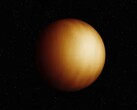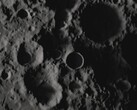On August 2, 2025, the Pan-STARRS 1 telescope at the Haleakalā Observatory in Hawaii discovered a mysterious celestial object orbiting our planet. During September, it was named 2025 PN7 and classified as a comet. But recently, an astronomer has suggested a new origin for this object, and it is surprising.
Thus, it is important to note that this object is mysterious and has not been observed much by various instruments. As a result, its origin is subject to numerous hypotheses, as is the case with Avi Loeb, an astronomer from Harvard.
He believes that 2025 PN7 could be a remnant of a Soviet space mission launched in 1964. Named Zond 1, this spacecraft was supposed to study Venus, which hides an invisible danger for Earth. However, shortly after its launch, astronomers lost contact with this probe, and it was lost in space.
As a result, with the help of Adam Hibberd, an engineer and member of the Initiative for Interstellar Studies, they traced the trajectories followed by Zond 1 and 2025 PN7, and the resemblance is striking. But even if this could explain the origin of this celestial object, it is necessary to remain cautious.
In fact, nothing has been confirmed yet, even though this type of situation has already occurred in the past with 2020 SO. Therefore, if several hypotheses are mentioned, additional studies will need to be conducted to discover the exact origin of this object orbiting the Earth.
















